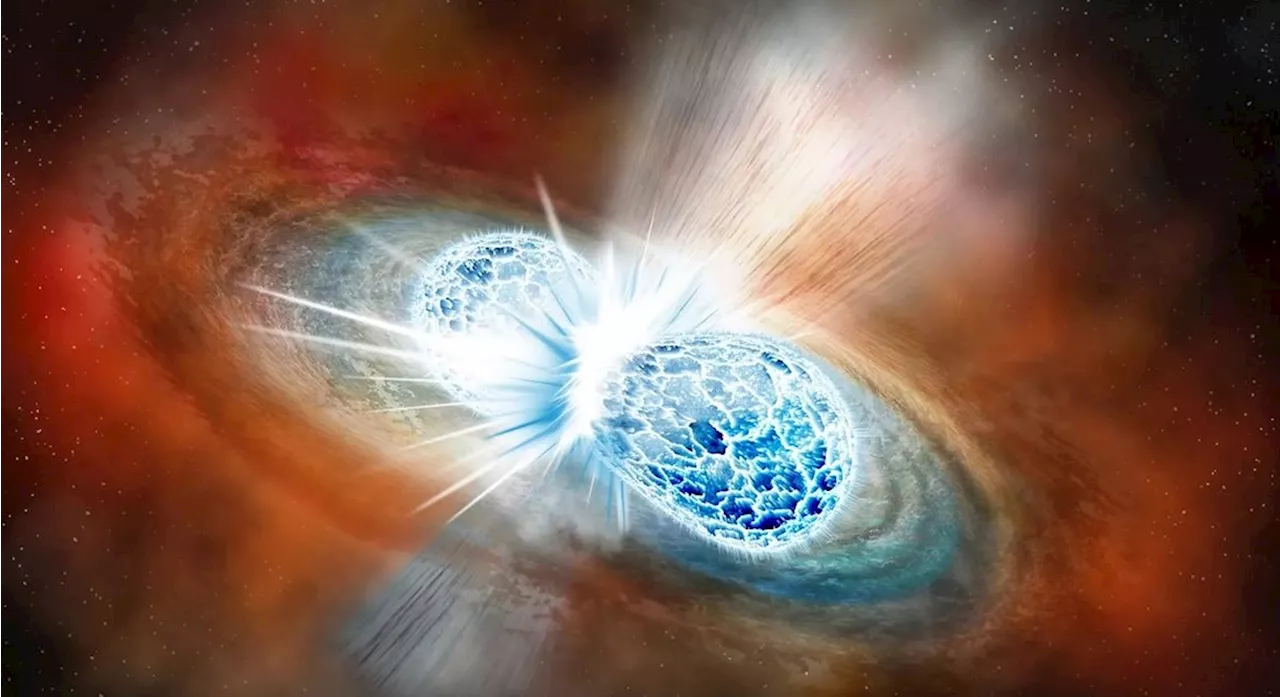Scientists may be one step closer to unlocking one of the great mysteries of the universe after calculating that neutron stars might hold a key to helping us understand elusive dark matter.
physicists from the ARC Centre of Excellence for Dark Matter Particle Physics, led by the University of Melbourne, calculated that energy transferred when dark matter particles collide and annihilate inside cold dead neutron stars can heat the stars up very quickly.
"The search for dark matter is one of the greatest detective stories in science. Dark matter makes up 85 per cent of the matter in our universe, yet we can't see it. Dark matter doesn't interact with light -- it doesn't absorb light, it doesn't reflect light, it doesn't emit light. This means our telescopes can't directly observe it, even though we know it exists. Instead, its gravitational pull on objects we can see tells us it must be there.
"While dark matter is the dominant type of matter in the Universe, it is very hard to detect because its interactions with ordinary matter are very weak. So weak, in fact, that dark matter can pass straight through the Earth, or even through the Sun. "If the energy transfer happens quickly enough, the neutron star would be heated up. For this to happen, the dark matter must undergo many collisions in the star, transferring more and more of the dark matter's energy until, eventually, all the energy has been deposited in the star," Mr Virgato said.
"If we are to understand dark matter -- which is everywhere -- it is critical that we use every technique at our disposal to figure out what the hidden matter of our universe actually is," Mr Virgato said.
Astrophysics Astronomy Stars Black Holes Sun Solar Flare Nebulae
United Kingdom Latest News, United Kingdom Headlines
Similar News:You can also read news stories similar to this one that we have collected from other news sources.
 Neutron Stars Spew Jets That Travel at Relativistic Speeds, Scientists SayThese fast-moving outbursts of material are slightly different from those launched by black holes.
Neutron Stars Spew Jets That Travel at Relativistic Speeds, Scientists SayThese fast-moving outbursts of material are slightly different from those launched by black holes.
Read more »
 Scientists use X-rays to reveal speed of neutron star jetsAstronomers measured neutron star jets, reaching one-third light speed. They utilized X-ray bursts to time the jet launch.
Scientists use X-rays to reveal speed of neutron star jetsAstronomers measured neutron star jets, reaching one-third light speed. They utilized X-ray bursts to time the jet launch.
Read more »
 Team including Northwestern scientists detect waves caused by merger of neutron star, mystery objectTeam including Northwestern scientists detect merger of neutron star, mystery object
Team including Northwestern scientists detect waves caused by merger of neutron star, mystery objectTeam including Northwestern scientists detect merger of neutron star, mystery object
Read more »
 Colliding Neutron Stars are the Ultimate Particle AcceleratorsSpace and astronomy news
Colliding Neutron Stars are the Ultimate Particle AcceleratorsSpace and astronomy news
Read more »
 Colliding neutron stars hint at new physics that could explain dark matterRobert Lea is a science journalist in the U.K. whose articles have been published in Physics World, New Scientist, Astronomy Magazine, All About Space, Newsweek and ZME Science. He also writes about science communication for Elsevier and the European Journal of Physics. Rob holds a bachelor of science degree in physics and astronomy from the U.K.
Colliding neutron stars hint at new physics that could explain dark matterRobert Lea is a science journalist in the U.K. whose articles have been published in Physics World, New Scientist, Astronomy Magazine, All About Space, Newsweek and ZME Science. He also writes about science communication for Elsevier and the European Journal of Physics. Rob holds a bachelor of science degree in physics and astronomy from the U.K.
Read more »
 How Massive Can Neutron Stars Get?A team of scientists at Purple Mountain Observatory in China has determined that a non-rotating neutron star can't be much more than 2.25 solar masses, otherwise it would become a black hole.
How Massive Can Neutron Stars Get?A team of scientists at Purple Mountain Observatory in China has determined that a non-rotating neutron star can't be much more than 2.25 solar masses, otherwise it would become a black hole.
Read more »
